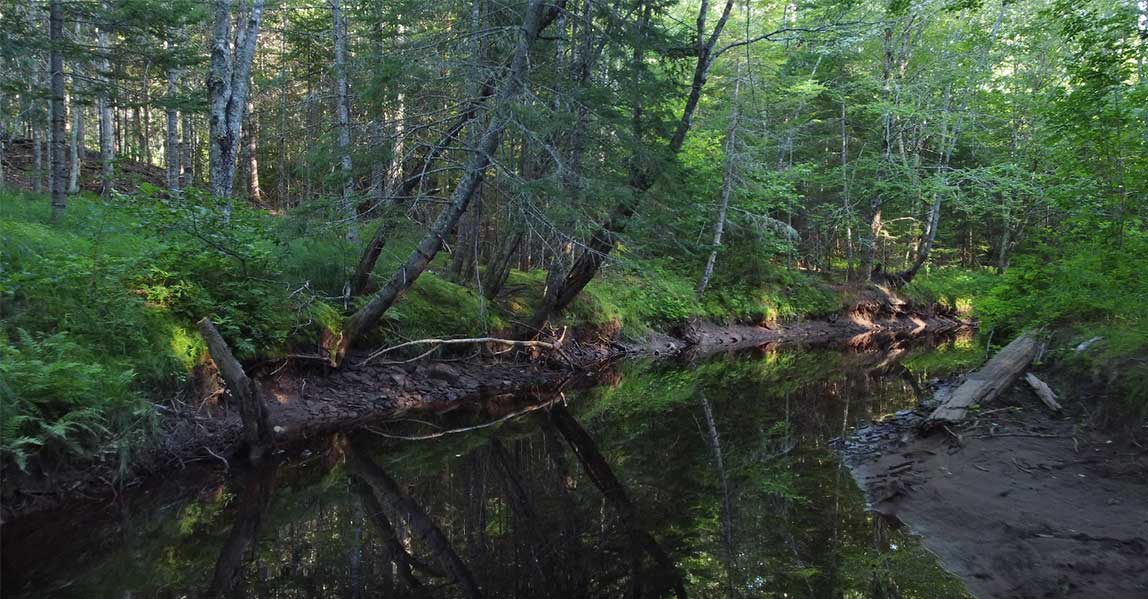Riparian Buffer Zone
Streams and rivers require adequate vegetation along their banks to protect them from development. This area is called the “riparian buffer zone” and serves as a transition zone between aquatic and terrestrial environments. By connecting land and water, this buffer zone has significant biological and ecological importance.
The Importance of a Healthy Riparian Buffer Zone
The riparian buffer zone is home to a mix of native wildflowers, grasses, shrubs and trees that slow down runoff. This allows water to seep into the ground, recharge wells and reduce flooding. Streamside vegetation also filters pollutants, so they don’t end up in waterways.
The long roots hold the soil in place to prevent erosion. In addition, the trees cast their shadow over the water, keeping it cool for fish, frogs and other aquatic species.
When dead or uprooted trees fall into a watercouse, they create aquatic habitats for fish by forming pools and riffles within the stream. The insects in this buffer zone provide food for fish, birds and other animals in the food chain.
Small Streams are Very Important
Within the boundaries of Shediac and Cap-Acadie municipalities, there are many small streams that contribute to the charm and character of our coastal communities. Flowing through, forests, neighborhoods, parks, trails and urban areas, they provide many opportunities to enjoy the outdoors.
Despite their size, these small streams play a vital role in the health of our watersheds, especially in maintaining good water quality! These important watercourses have high ecological value, but they are vulnerable to development, hence the need to better protect them with an adequate buffer zone.

This map shows the many rivers and streams that flow in our communities. Despite their size, small streams play a vital role in the health of our watersheds, especially in maintaining good water quality! These important watercourses have high ecological value, but they are vulnerable to development, hence the need to better protect them with an adequate buffer zone.
Watch this Video About the Importance of Caring for the Health of Small Streams
Take Action for Healthy Watercourses
As a property owner, you can help protect local water quality, especially if you live close to water. There are also important provincial regulations in place to protect watercourses and wetlands. Your actions influence the health of that watercourse so it can perform its ecosystem functions for our benefit while providing a healthy habitat for fish and wildlife.
Now that you know about some of the benefits of buffer zones, you can take action around your home to help protect our local watercourses.
- For starters, you can simply stop mowing along the stream and leave enough vegetation. The seeds and plants already present will grow and populate this new natural area.
- If you want things to move faster, you can also add plants but especially avoid invasive species.
- Choose native flowers shrubs and trees because they are best suited to our region.
- Native plants are also more resistant to drought and disease and interact better with local wildlife; pollinators love them.
Stormwater Runoff – Everyone can help
We all know that stormwater runoff eventually reaches streams, rivers and water bodies such as lakes or bays. Even if you don’t live close to water, you can still help protect water quality by reducing the flow of stormwater into municipal storm drains and ditches. Rain barrels can be used to collect water from roofs and rain gardens can absorb runoff and filter pollution.
You can read more about the importance of a healthy watershed for water quality by visiting our page on water quality (to be published soon). Contact your local watershed group to learn more.
Interesting Links
Visit these websites to learn more.
Native trees of the Acadian Forest – Their importance for healthy waterways
https://www.youtube.com/watch?v=ffs3Ce6Gutk&t=1s
Shoreline property owner’s guide – The benefits of healthy buffer zones
https://shediacbayassociation.org/wp-content/uploads/2020/04/Landowner-Buffer-Zone-Guide.pdf
Waterfront property – Landscape Guide for the homeowner
https://www.saa-aprse.ca/wp-content/uploads/2013/02/LandscapeGuideAmenagement.pdf
Beneficial management practices for riparian zones in Atlantic Canada
https://nsefp.ca/wp-content/uploads/2019/09/BMP-Atlantic-riparian_zones.pdf

This initiative is sponsored by:




